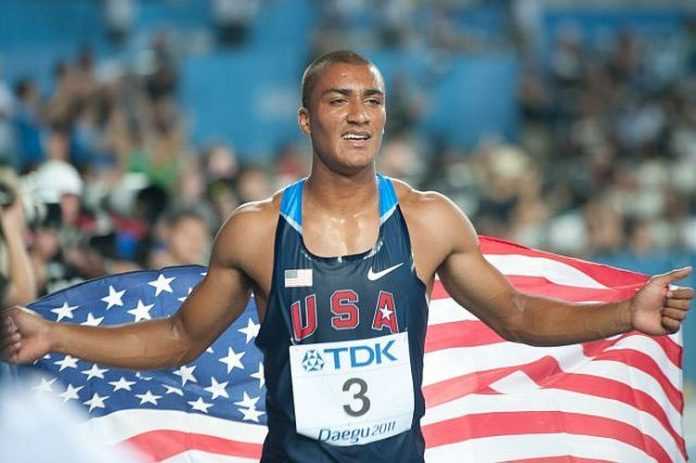Track and field athletes, officials and fans have all heard the joke: “What’s more exciting: the Decathlon or watching paint dry?”
If you’re not into the multi-events – and that’s most of you – you’ll nod your head in agreement with those who vote for the paint (!), against both the men’s 10-eventer and the women’s seven-event program.
As IAAF chief Sebastian Coe is always looking for innovative ways to make the sport more enticing, here’s an idea: make the Decathlon and Heptathlon more like the Modern Pentathlon.
Huh? Am I mad? Failed a doping test recently?
Nope; just a way to ramp up the thrill factor, at least at the end of these events.
Let’s face it, the Modern Pentathlon is not seen as a center of excitement in the Olympic Games. Created for the 1912 Olympic Games in Stockholm (SWE) by either International Olympic Committee founder Baron Pierre de Coubertin (SUI) or organizing committee chair Viktor Balck, it was designed to evoke the pentathlon of the ancient Olympic Games with five sports scored for points: fencing, swimming, riding, shooting and running.
For most of its Olympic history, the sport was a vagabond, wandering among the sites for the first four sports before the running finale. That was changed to a single site for the 1984 Games in Los Angeles and then to a one-day format in 1996 in Atlanta.
The shooting and running phases were combined into a “Laser Run” event beginning in 2009 and re-tooled in 2013 to include four laps of 800 m each, prefaced by laser shooting at five targets.
But the signature element of the format is that based on the points accumulated through the first four events prior to 2009 and since then, after the first three events, the competitors are handicapped by time so that the competition leader starts first, with a handicap, and the first person to cross the finish line is the overall winner of the event.
So, for the decathlon, the obvious corollary would be the use a handicap start in the final event, the 1,500 m, so that the first person to finish will be the winner of the event. Same for the women’s 800 m, the finale of the heptathlon.
Wouldn’t that make the event a lot more interesting?
In fact, you could do the same with the final event of the first day as well: the men’s 400 m and the women’s 200 m, although their short duration makes the timing issues more difficult.
Ah, but what about the scoring? After all, these events are compared across the years by their scores and not just who won and lost. True, but this is also accommodated by this format, since everyone is still running the same distance, but their starting time is staggered by their relative point totals to the other competitors. (For the 400 m and 200 m, how about using blocks that sent a pulse to the feet of the runners when they were supposed to go, and their times and points were calculated from that moment forward?)
The pacing and strategy of these races would be changed, true, but that has been the case forever. Today, the athletes know full well the number of seconds they need to make up to advance to a preferred final place; now, their final placement will be the same as where they finish the last event.
No more clipboards, calculators, apps or other mental gymnastics or references to smart phones to figure out who finished where. Just look at who crossed the line in first, second, third and the rest of the places.
And it’s not only the Modern Pentathlon that proves that this format works, and works well. In winter sport, the Nordic Combined also used to have manual scoring to figure out who placed where. But in 1985, the Gundersen method was adopted that created a handicap start in the cross-country race based on the results of the ski jumping event. The “point-time” differential is reviewed by the Federation Internationale de Ski consistently to keep it current with the advances made by the athletes in the sport.
But in the Nordic Combined, the first person to cross the finish line is the winner; no clipboards needed.
The end-of-event scoring would actually not change, but the excitement level would. Watching the Diamond League Final in Zurich (SUI) on Thursday, I was struck by how the sold-out crowd at the Letzigrund Stadium exploded when the races came down to the end with a tight finish.
There were no world records set on Thursday and not even any world-leading marks. But the racing was compelling, and the crowded responded. In the multi-events, why not give everyone a clear picture of where the medalists are, without having to refer to a scoring table?
Just watch who crosses the line in first, second and third place. A radical change? Sure, but unlike so many others, one that is already proven to work, even at the Olympic Games.
Rich Perelman
Editor


























